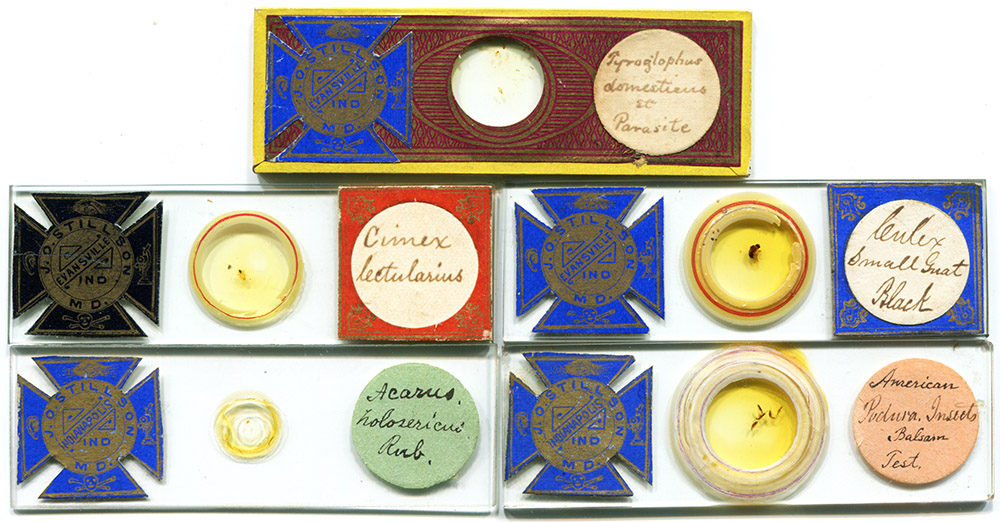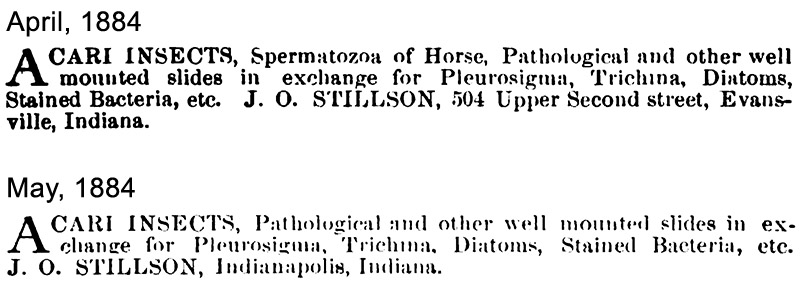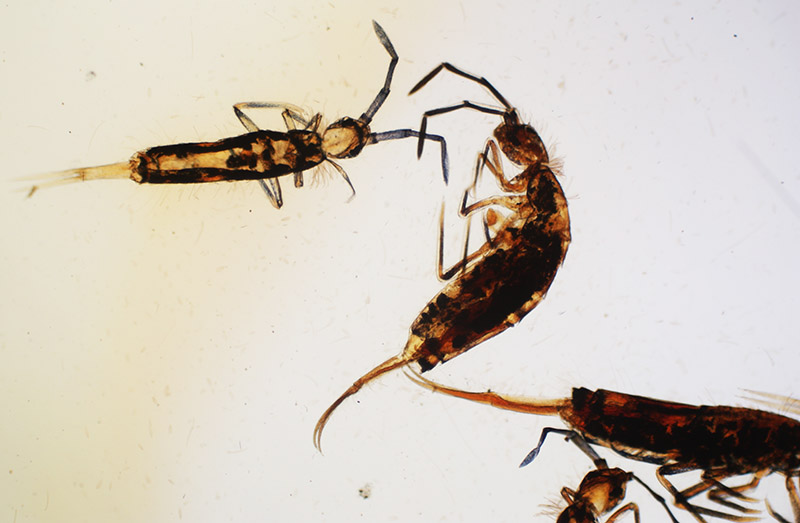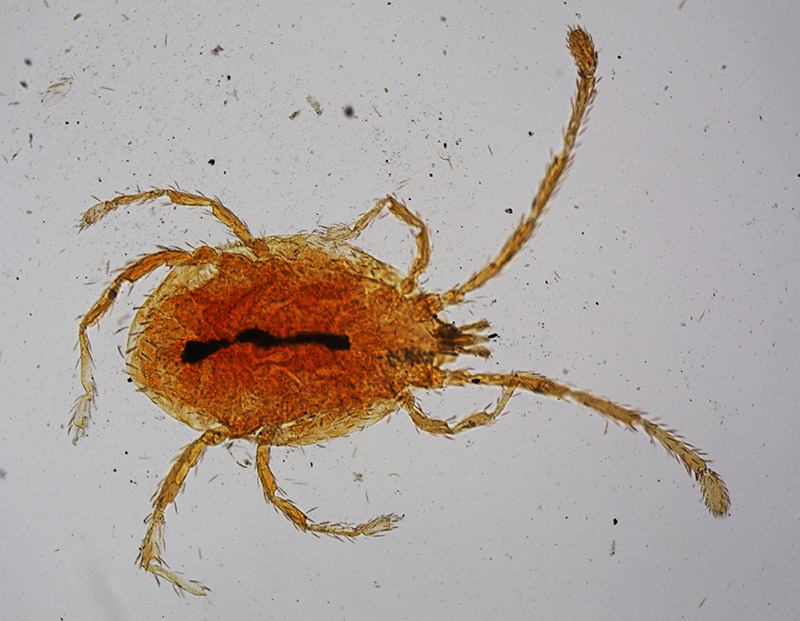Joseph Osgood Stillson, 1850 - 1926
by Brian Stevenson
last updated May, 2020
J.O. Stillson’s microscope slides are particularly notable for their Maltese cross-shaped labels (Figure 1). Stillson was a physician in Indiana, USA, who specialized in diseases of the eyes, ears, and throat. His medical specialty is illustrated in Stillson’s slide labels: arms of the cross include an eye and an ear, as well as a microscope and a skull-and-crossbones (Figure 2).
Stillson was well acquainted with microscopy by the time he completed his medical training: he spoke of studying microscopic analyses with Dr. Carl Heitzmann in Vienna, Austria during 1873. He joined the American Society of Microscopists in 1882, and later served in offices of the Society. Stillson is known to have offered to exchange microscope slides between 1883 and 1886.

Figure 1.
Circa 1884 microscope slides by J.O. Stillson. The Maltese cross-shaped labels are printed with his name and address; those on the top and middle row are addressed Evansville, Indiana, and those on the bottom row bear Indianapolis, Indiana. Stillson moved from Evansville to Indianapolis in April, 1884 (see Figure 3). He is known to have advertised slides for exchange between 1883 and 1886.

Figure 2.
Magnified views of a Stillson label. The arms of the Maltese cross include symbols of his medical specialty: an eye and an ear.

Figure 3.
Exchange offers that were published by Stillson in “The Microscope”, which date his move from Evansville to Indianapolis.

Figure 4.
American Podura spp. (springtails), prepared ca. 1884 by J.O. Stillson (see Figure 1). Photographed with C-mounted digital SLR camera and a 3.5x objective lens.
Joseph Osgood Stillson was born on May 28, 1850, the third child and first son of Joseph and Elizabeth (née Riddick) Stillson. The father was a physician in Bedford, Indiana.
Joseph graduated from Hanover College, Indiana, in 1871, then completed his M.D. at Miami Medical College, Cincinnati, Ohio in 1873. He then spent about a year and a half “in eye and ear hospitals” “at the universities of Vienna, Berlin and Paris”. it was during this time in Europe that Stillson studied with Carl Heitzmann.
Upon his return to the States, Stillson set up an ophthalmology and otolaryngology practice in Evansville, Indiana. He married Rose Matilda Bisch on October 27, 1880, with whom he had one child.
Stillson joined the American Society of Microscopists during their 1882 annual meeting. During that conference, he discussed some of his work with staining bacteria and examining the physiology of human red and white blood cells. At the 1884 national meeting, Stillson presented a demonstration on “preparing and mounting insects”. He later served on the Society’s Executive Board.
A report on Stillson’s home-made slide cabinet was reprinted in the prestigious Journal of the Royal Microscopical Society, “Dr. J.O. Stillson's cabinet consists of a number of trays made of thick pasteboard. They are 9 in. wide and 16 in. long. There are two rows of slides in each tray and 10 or 12 in each row according to the partitions, which can be removed or left in. The depth of the tray is equal to the thickness of the thickest slides, so that when they are in place, each lying flat, they fill the apartment. There is a lid to each tray, also made of pasteboard but stiffened, and made heavier by the addition of a strip of wood, such as is used in making cigar boxes. This strip extends all around the margin of the lid, and there is another across the middle the long way. Two long openings are cut through the lid, about 2 in. wide, so that when the lid is closed it will press the slides down in their places firmly, but at the same time not touch the cover-glasses. High, dry and opaque mounts can be placed alongside of the thinnest balsam or diatoms, and when it is desired to look for a slide the whole tray can be surveyed with the eye at a glance, and the names of twenty or twenty-four specimens can be read without opening the tray. When the trays are all in the box, the lid holds them firmly in place suitable for shipping. He has borders for the labels printed on fancy coloured paper, and writes in pencil on the wrong side of the label such a history as he desires and pastes it on the slide. Then the name labels are cut with a circular No. 8 punch, and pasted on the border paper. There is plenty of room to write in front the English and Latin names, date and number; by turning the slide round one can read from the back through the glass the history and mode of preparation”. Disappointingly, none of the slides shown in Figure are labeled with that method.
Beginning in 1883, he published offers to exchange microscope slides and specimens in US microscopical journals. Those advertisements continued through at least 1886.
Until 1884, Stillson also served as “professor of physiology and diseases of eye and ear” at Evansville Medical College. That school’s closing in 1884 prompted his move to Indianapolis, where he served as “chair of ophthalmology at the Central College (of Physicians and Surgeons)”.
The Stillson family spent most of 1912 in Europe, where Joseph undertook training in clinics in Paris, London, and Berlin.
J.O. Stillson died of pneumonia on January 28, 1926, at his home in Indianapolis.

Figure 5.
J.O. Stillson described this red mite as “Acarus holosericus” (a misspelling of Acarus holosericeus, now Trombidium holosericeum). That species appears to be limited to the Old World, and so is probably a North American species of Trombidium. Slide prepared ca. 1884 by J.O. Stillson (see Figure 1). Photographed with C-mounted digital SLR camera and a 10x objective lens.

Figure 6.
An 1884 offer from J.O. Stillson, to exchange a Verick microscope objective lens for a Remington rifle.

Figure 7.
A joke by Joseph Stillson that became filler in newspapers throughout the country. This is from the New Haven, Connecticut “Morning Journal and Courier”.
Resources
The American Monthly Microscopical Journal (1883) Exchange offer from J.O. Stillson, Vol. 4, page 140
The American Monthly Microscopical Journal (1890) The 13th Annual Meeting of the American Society of Microscopists, pages 197-206
The Common School Teacher (1876) “We have had laid on our table a neat pamphlet, entitled "European Medical Education, as Compared with American," which contains an address read before the Indiana, Kentucky and Illinois tri-state medical society, at Vincennes, Ind., by J.O. Stillson, A.M., M.D. It contains much valuable information, concerning the manner of getting a medical education in the universities of the Old World. Dr. Stillson spent a year and a half or more at the universities of Vienna, Berlin and Paris, and is well qualified to speak on the subject of his lecture. The Doctor was thoroughly educated in the best schools of this country before he went to Europe. He returns to us as one of the most accomplished young men in this State. He is destined to stand in the front rank of physicians and scientists of both hemispheres. In his speciality of the eye and ear he has already acquired a reputation along with the William's of the West.”, Vol. 2, pages 112-113
Gaillard's Medical Journal (1883) American Microscopical Society, Vol. 36, page 319
Hafner, Arthur W. (1993) Directory of Deceased American Physicians, 1804-1929, American Medical Association, Washington, D.C., page 640
History of Vanderburgh County, Indiana (1889) Brant & Fuller, Madison, Wisconsin, page 231
Indianapolis Journal (1893) “Dr. J.O. Stillson was born in Bedford, Ind., In 1850, and graduated from Hanover College In 1871, afterwards studying medicine with his father and at the Louisville University. Dr. Stillson also graduated from the Miami Medical College at Cincinnati. He also attended the school In connection with Bellevue Hospital, New York. A number of years he spent abroad in eye and ear hospitals. On returning to this country he began practicing at Evansville, but afterwards came to Indianapolis. In 1884 he was invited to the chair of ophthalmology at the Central College, of this city, and he accepted. In 1885 he was appointed oculist of the Blind Institute. He is a member of a number of medical societies and now lives at the corner of Pennsylvania and Michigan streets. For a long time he was secretary of the faculty of the Central College. He is the Democratic member of the board”, October 25 issue, page 3
The Journal of the Indiana State Medical Association (1912) “Dr. J.O. Stillson, Indianapolis, is spending a year in postgraduate work in Paris”, Vol. 5, page 357
The Journal of the Indiana State Medical Association (1912) “Dr. J.O. Stillson and family, of Indianapolis, have recently returned from a ten month’s sojourn in Europe. Dr. Stillson attended clinics in Paris, London and Berlin”, Vol. 5, page 494
Journal of the Royal Microscopical Society (1883) Stillson’s object cabinet, Series 2, Vol. 4, page 480
The Microscope (1884) Exchange offers from J.O. Stillson, Vol. 4, pages 24, 48, 72, 96, 144, 168, 216, 240, and 246
The Microscope (1884) American Microscopical Society, Vol. 4, page 235
The Microscope (1886) Exchange offers from J.O. Stillson, Vol. 6, pages 72 and 120
New Haven Morning Journal and Courier (1885) September 14 issue, page 1
Proceedings of the American Society of Microscopists (1882) pages 14 and 274
Report of the Commissioner of Education for the Years 1884- ’85 (1885) Central College of Physicians and Surgeons, Indianapolis, Indiana, pages 654-655
Stillson, J.O. (1897) Double mastoid disease, followed by abscess of the spheno‐maxillary fossa and neck, with a report of a case-recovery, The Laryngoscope, Vol. 3, pages 113-119
Stillson, J.O. (1898) Mastoidectomy, involving lateral sinus complications disease, The Laryngoscope, Vol. 4, pages 364-370
Stowell, C.H. (1883) The Bioplaston Theory of Heitzmann - A review of Heitzmann’s “Microscopical Morphology”, The Microscope, Vol. 3, pages 5-9
U.S. census and other records, accessed through ancestry.com






